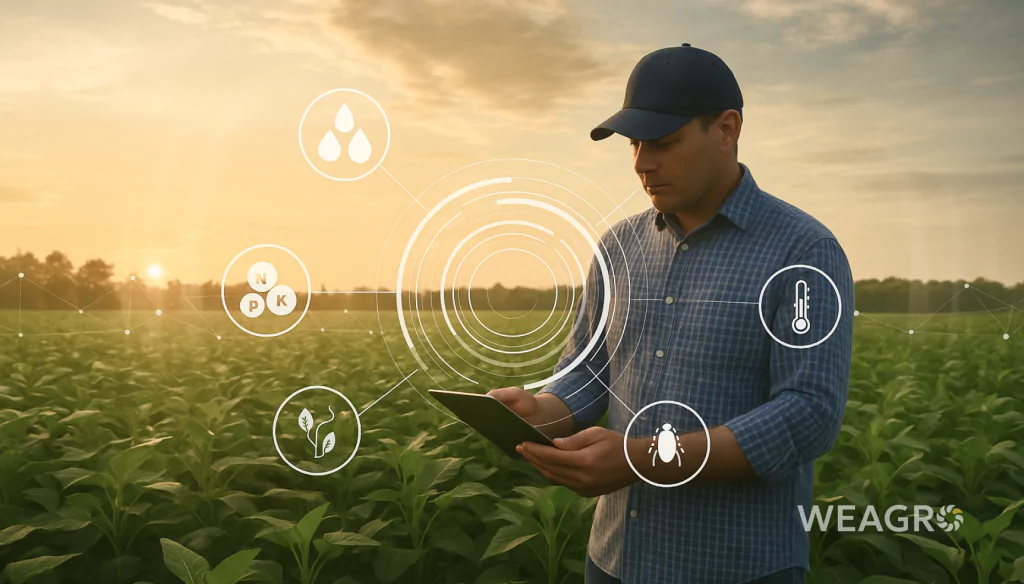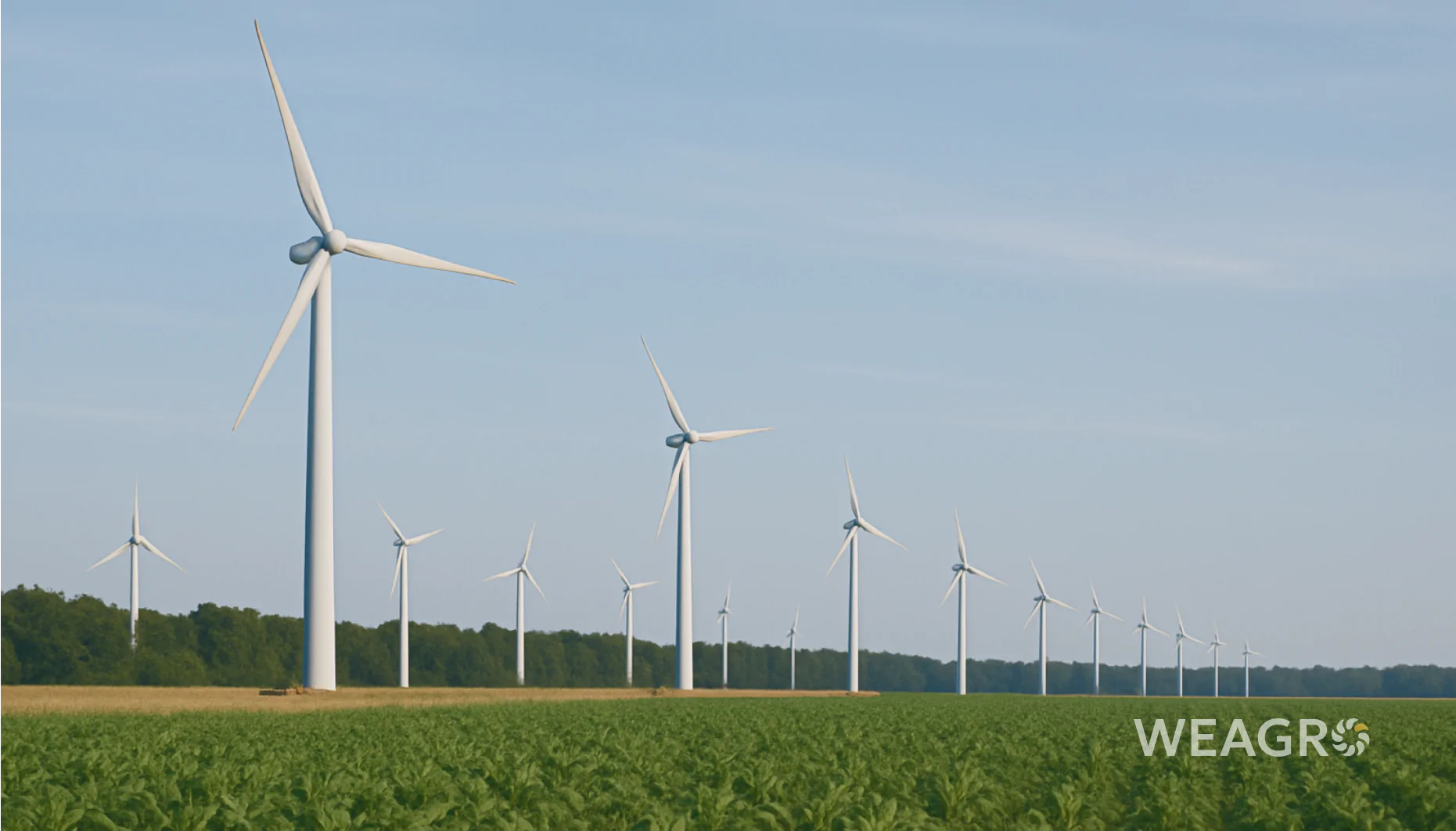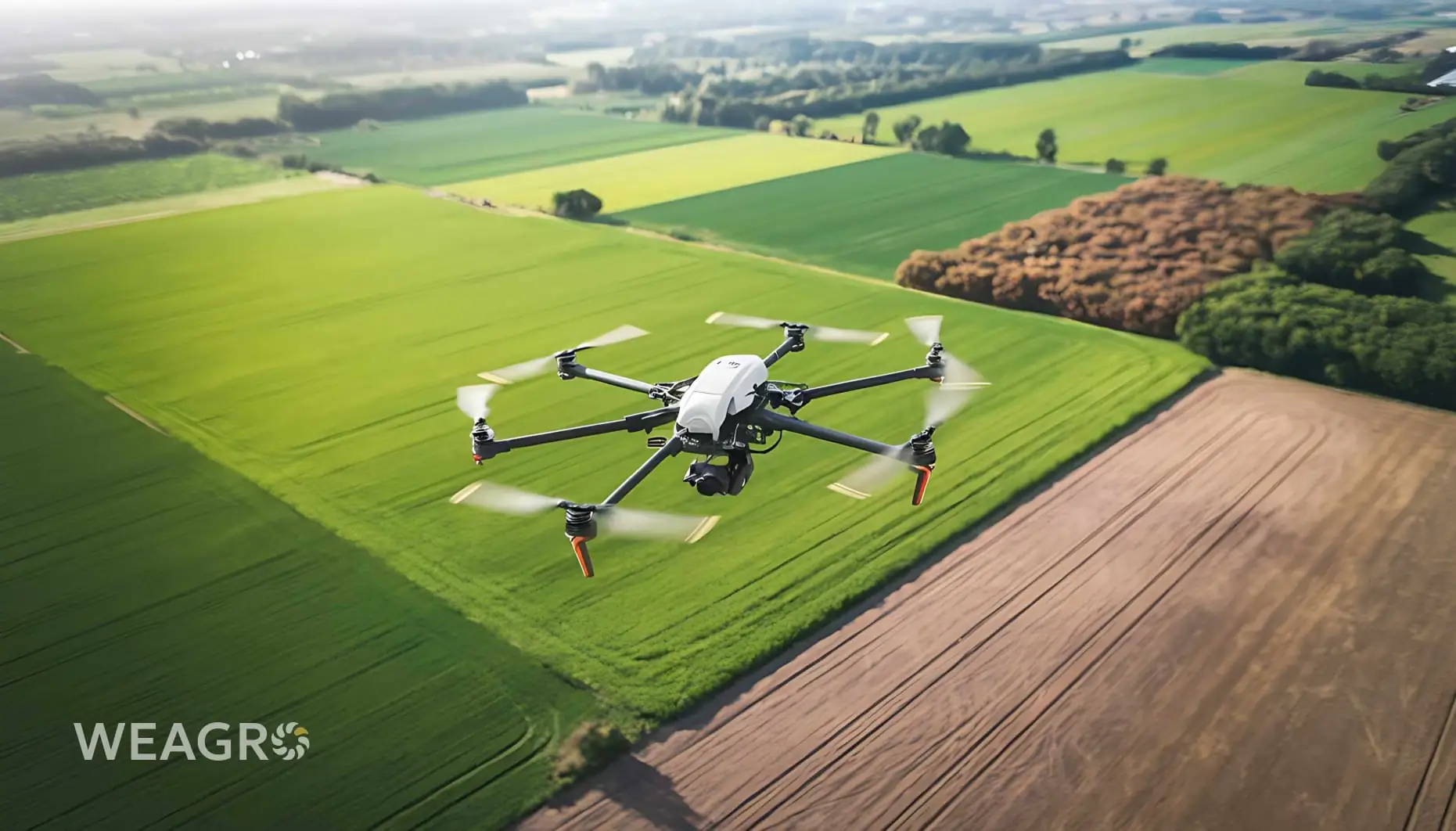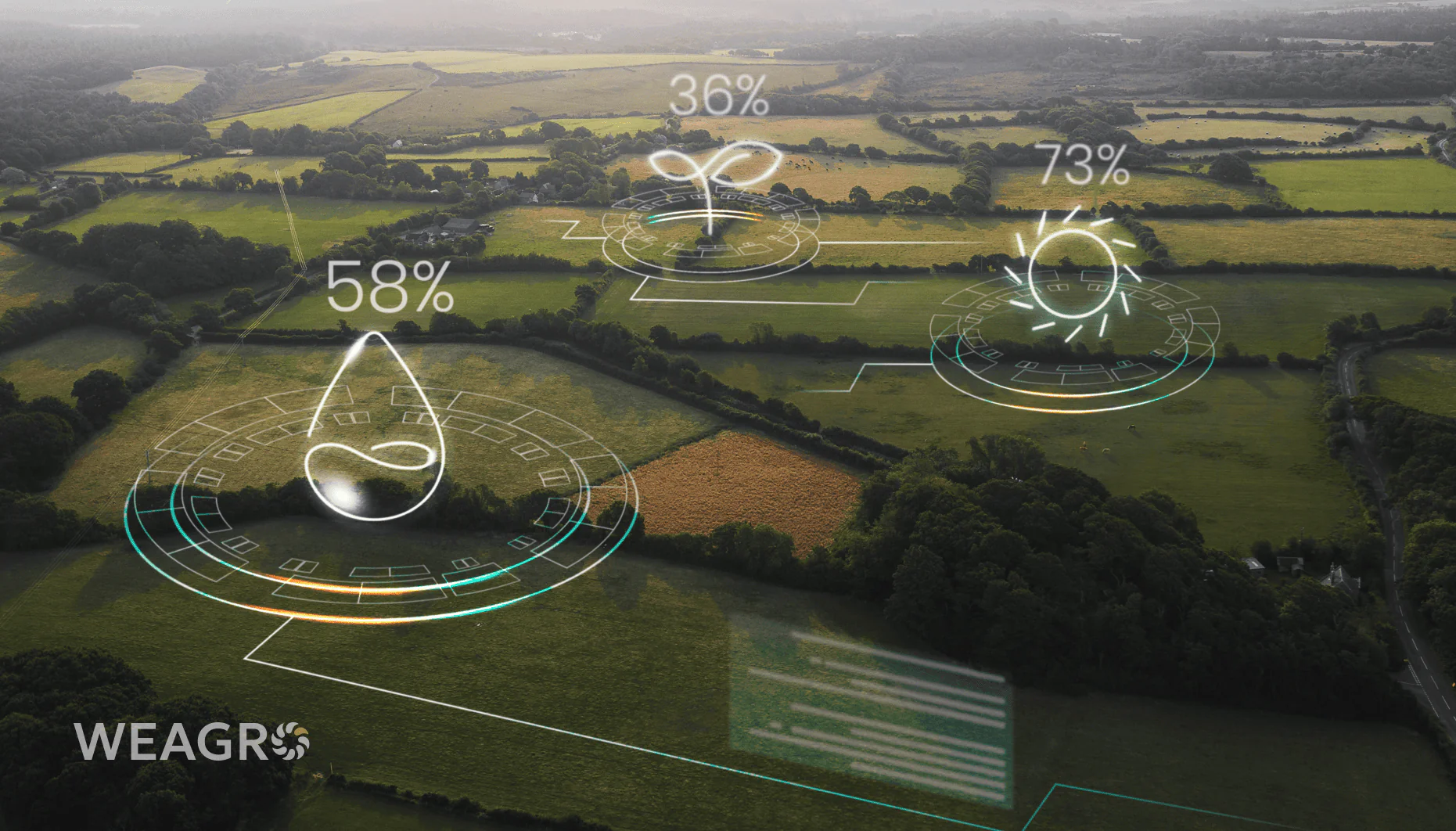Extensive agriculture is an approach to farming that focuses on the efficient use of available natural resources. This type has a long history and remains widespread in many countries worldwide, including Ukraine. In this article, we will examine the essence of traditional farming, analyze its advantages and disadvantages, and discuss the role of modern technologies in its development.
What is Extensive Agriculture
Extensive production is a system based on using large areas of land with minimal labor and capital input per unit of area. The main goal of such activity is to maximize product output through expanding cultivated areas rather than intensifying production.
According to FAO, the total agricultural land area worldwide is about 4.7 billion hectares. In Ukraine, according to
The non-intensive farming method is characteristic of both large agricultural holdings that cultivate tens of thousands of hectares and small farming enterprises and individual peasant productions. Under conditions of limited access to financial resources and latest technologies, extensive agriculture allows maintaining an acceptable level of profitability.
Characteristics of Extensive Agriculture
To understand what extensive production is, let’s analyze its characteristics:
- large areas of agricultural land;
- low level of mechanization;
- minimal use of fertilizers and plant protection products;
- crop rotations dominated by grain and industrial crops;
- low yield per unit area;
- significant dependence on natural and climatic conditions.
Additionally, non-intensive agricultural production is usually characterized by relatively low production costs due to savings on labor costs and depreciation of fixed assets. However, under unpredictable weather conditions and market fluctuations, this often leads to unstable financial results.
At the same time, traditional farming allows preserving natural fertility and biodiversity of agricultural landscapes. With adherence to scientifically based crop rotations and agricultural technologies, such an approach to organizing agricultural production can be quite sustainable in the long term.
Read also: Precision Farming in Ukraine: Definition and Prospects
Advantages of Extensive Agriculture
Despite relatively low efficiency, the extensive method of agriculture has certain advantages:
- Lower production costs per unit of output.
- Simpler organization of production processes.
- Higher environmental friendliness due to minimized use of chemicals.
- Suitability for developing low-fertility and hard-to-reach lands.
- Preservation of traditional agricultural landscape and biodiversity.
Furthermore, extensive agriculture plays an important social role by providing employment in rural areas. In Ukraine, according to State Statistics, about 18% of all employed population is involved in the agricultural sector.
Considering these factors, traditional farming will maintain its significance for the economy and food security of our country for a long time. However, to increase its efficiency and sustainability, it is necessary to combine non-intensive farming methods with modern innovative technologies.
The Significance of Extensive Agriculture for the Environment
Extensive agriculture, when following scientifically based crop rotations and agricultural technologies, has less negative environmental impact compared to intensive farming. By avoiding excessive chemicalization, it helps preserve natural biodiversity of agroecosystems. The use of green manure and organic fertilizers helps maintain soil fertility.
However, uncontrolled expansion of cultivated areas at the expense of natural ecosystems can lead to reduced overall biodiversity and increased erosion processes. Therefore, even in traditional farming, it’s important to maintain a balance between agricultural enterprise and environmental preservation.
One of the promising directions for extensive farming development is organic production. According to FiBL, the global area under organic production in 2022 reached 96.4 million hectares. In Ukraine, according to Ministry of Agriculture and certification bodies, the organic agricultural land area as of the end of 2023 was 471,176 hectares, or 1.1% of the country’s total agricultural land. According to experts, Ukraine has the potential to increase this indicator at least threefold – to about 1.3 million hectares, which would correspond to the goal of reaching 3% of total agricultural land by 2030, declared by the Cabinet of Ministers in the resolution “On approval of the National Economic Strategy for the period until 2030“.
The development of the organic sector not only contributes to environmental preservation but will also increase the profitability of non-intensive agricultural producers through the sale of value-added products. The use of modern agrotechnical solutions in organic farming, such as nanofertilizers, biological preparations, and robotic equipment, helps compensate for lower yields compared to traditional extensive agriculture.
Read also: Organic Production in Ukraine
Disadvantages of Extensive Agriculture
Along with advantages, extensive agriculture has several significant disadvantages:
- Relatively low crop yields.
- Inefficient use of land resources.
- Seasonal production and weather dependence.
- Limited opportunities for labor productivity growth.
- Low marketability of farms.
Low yield is a result of minimal use of mineral fertilizers and plant protection products. As of 2024, the average
Seasonality of production and weather dependence in extensive farms are additional serious risks. Even a small deviation of meteorological conditions from the norm can lead to significant crop losses. The absence of irrigation and modern crop monitoring systems exacerbates this problem.
The low level of production process mechanization limits extensive agricultural producers’ ability to implement the latest technologies and increase labor productivity. In particular, in Ukraine, according to various estimates, there are less than 0.4 grain harvesters per 100 hectares of arable land, while in the USA this indicator exceeds 1.5 units.
The marketability of most non-intensive farms remains at 50-60%, meaning a significant portion of produced goods is consumed internally. This limits opportunities for business development investment and efficiency improvement. This problem is characteristic not only for small producers but also for large holding-type enterprises.
The Role of Modern Technologies in Extensive Agriculture

The implementation of modern agricultural technologies allows increasing the efficiency of traditional farming without excessive production costs increase. So, what is extensive production character with advanced methods:
- Use of precision farming elements (parallel driving systems, differentiated fertilizer application, crop monitoring using UAVs).
- Transition to resource-saving soil cultivation technologies (minimum and zero tillage, direct seeding).
- Application of effective plant protection systems (integrated system, use of biological preparations).
- Expansion of niche crops with high added value.
- Development of green tourism and other non-agricultural activities.
Precision farming allows optimizing the use of seeds, fertilizers, plant protection products, and other resources. In particular, differentiated application of mineral fertilizers based on yield mapping saves 15-20% of fertilizers without reducing results. Using global positioning systems (GPS) for seeding and crop treatment ensures uniform distribution of seeds, preparations, and fertilizers and prevents their overuse.
Resource-saving technologies such as minimum and zero tillage, Strip-till, No-till allow not only reducing production costs by 30-50% but also improving water regime and soil structure. Zero tillage (No-Till) is gaining popularity, especially in Ternopil, Zhytomyr, and Kirovohrad regions, and the potential for their expansion in Ukraine is significant. This is due to No-Till advantages such as resource savings, soil fertility improvement, erosion prevention, and yield increase. However, implementing these initiatives requires equipment and adherence to appropriate agricultural technologies.
Read also: No-till technologies: what it is, prospects in Ukraine
Development of non-agricultural activities such as agritourism, craft product production, and folk crafts allows diversifying business and increasing its sustainability. Together with other services for visitors, this can provide up to 30-50% of rural household income.
However, effective implementation of these innovations requires not only significant investments but also appropriate knowledge and skills. The online platform WEAGRO can become a reliable partner for extensive farms on their path to technological modernization. Besides financial instruments, the service offers professional agronomic consulting and educational programs. This will help farmers choose the optimal strategy for their business development considering natural and climatic conditions and market situation.
Prospects of Extensive Agriculture in Ukraine
Extensive agriculture will maintain its significance in Ukraine’s agricultural sector for a long time. This is especially true for risky farming zones and regions with a high proportion of low-fertility soils.
Despite the general trend towards intensification of agricultural production, traditional farming remains an important part of Ukraine’s agricultural sector. This is due to several factors, such as the availability of significant land resources, climatic features of certain regions, and economic realities of many small and medium-sized farms. The non-intensive approach allows effective use of lands less suitable for intensive cultivation while preserving natural ecosystems and biodiversity.
The online service WEAGRO opens new opportunities for small and medium agricultural producers who farm extensively. The platform allows farmers to purchase seeds, fertilizers, plant protection products, and other goods with deferred payment. This is particularly relevant in conditions of limited access to bank loans. Thanks to WEAGRO, traditional farms can increase their efficiency and competitiveness.









